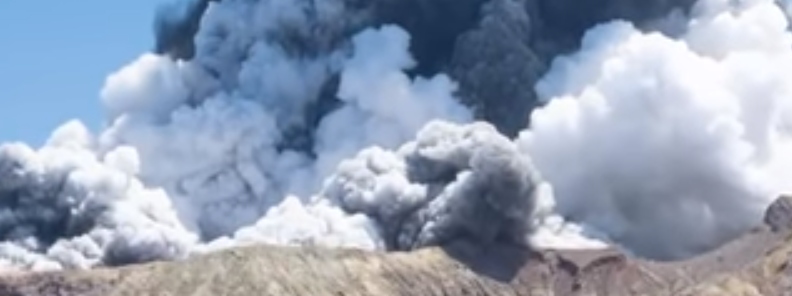NZ Defence Forces recover 6 bodies from White Island volcano, raising death toll to 14

NZ Defence Force assets with specialized equipment went to White Island volcano late December 12 (UTC) and recovered the bodies of 6 of the 8 people killed on the island during a short-lived eruption on Monday, December 9, 2019. 47 people were on the island at the time of the eruption. With 8 confirmed casualties after the eruption, the death toll is now 14. 28 are still in are being treated in specialist burn units in New Zealand and Australia.
The Volcanic Alert Level was reduced from Level 3 to 2 at 21:20 UTC on December 11 after no further eruptive activity since Monday’s eruption but the Aviation Color Code remains Orange to date.
The volcanic tremor has decreased at around midnight UTC December 12 but remained very high compared to normal levels. It was accompanied by vigorous steam and mud bursts from the active vent area.
The combined interpretation of data showed that magma was still degassing at shallow depths and the situation remained highly volatile.

White Island eruption – Helicopter footage of destruction


Whakaari / White Island: Police detail plan to recover bodies on Friday morning
The operation to recover the bodies this morning is going to plan, NZ Police said in a statement released 20:15 UTC, December 12 (09:15 LT, December 13).
"The recovery team is in the area where we believe the majority of the bodies are.
"The operation is taking more time than expected, this is due to the protective equipment the recovery team is wearing which can be restrictive and heavy but is necessary. Conditions for the operation are good in regard to the weather, sea state and the environment on the island."
6 bodies were on board HMNZS Wellington at 22:11 UTC and on mainland shortly after.
Two more people are still on the island, presumed to be dead.


Welcoming families of those missing on Whakaari/White Island to mainland


Deputy police commissioner Wally Haumaha on caring for the families of the Whakaari victims


Helicopter pilot talks about being one of the first people on the scene at White Island tragedy


Scale of burns injuries from White Island disaster ‘a unique event’
Related articles:
White Island: Significantly increased volcanic tremor, new eruptions likely, New Zealand (December 11)
47 people at White Island at the time of eruption, periodic steam and gas driven jetting continues (December 10)
White Island volcano eruption – Death toll rises to 14, 2 people remain missing, New Zealand (December 9)
Geological summary
Uninhabited 2 x 2.4 km (1.2 x 1.5 miles) White Island, one of New Zealand's most active volcanoes, is the emergent summit of a 16 x 18 km (10 x 11.2 miles) submarine volcano in the Bay of Plenty about 50 km (31 miles) offshore of North Island.
The island consists of two overlapping andesitic-to-dacitic stratovolcanoes; the summit crater appears to be breached to the SE, because the shoreline corresponds to the level of several notches in the SE crater wall. Volckner Rocks, four sea stacks that are remnants of a lava dome, lie 5 km (3.1 miles) NNE.
Intermittent moderate phreatomagmatic and strombolian eruptions have occurred throughout the short historical period beginning in 1826, but its activity also forms a prominent part of Maori legends.
Formation of many new vents during the 19th and 20th centuries has produced rapid changes in crater floor topography. Collapse of the crater wall in 1914 produced a debris avalanche that buried buildings and workers at a sulfur-mining project. (GVP)
Featured image credit: Michael Schade

Whakaari/White Volcanic Island. What I, and now I suspect a majority of people are wondering, why anyone was allowed to land on Whakaari in the first place. As a geologist, what strikes me about Whakaari are the geomorphic signatures of its instabilities: cuspate margins-evidence of frequent flank collapses, multiple cones that have been blown away, and the fact that the mountains sits in the oceans and like all active volcanos, expands and contracts with the movement of magma within its bowels. Common sense says, “Stay Away!” Those who lost their lives were mislead by the institutions that should have protected them. And for the communities that ring the adjacent area, they better have in place a tsunami warning system when a flank collapse occurs.